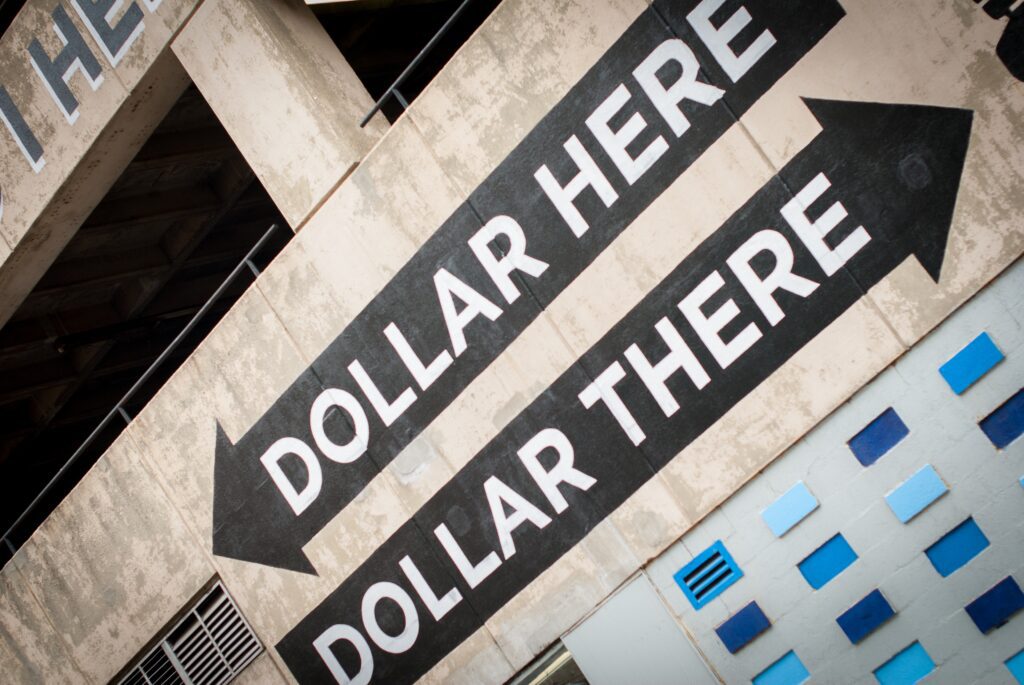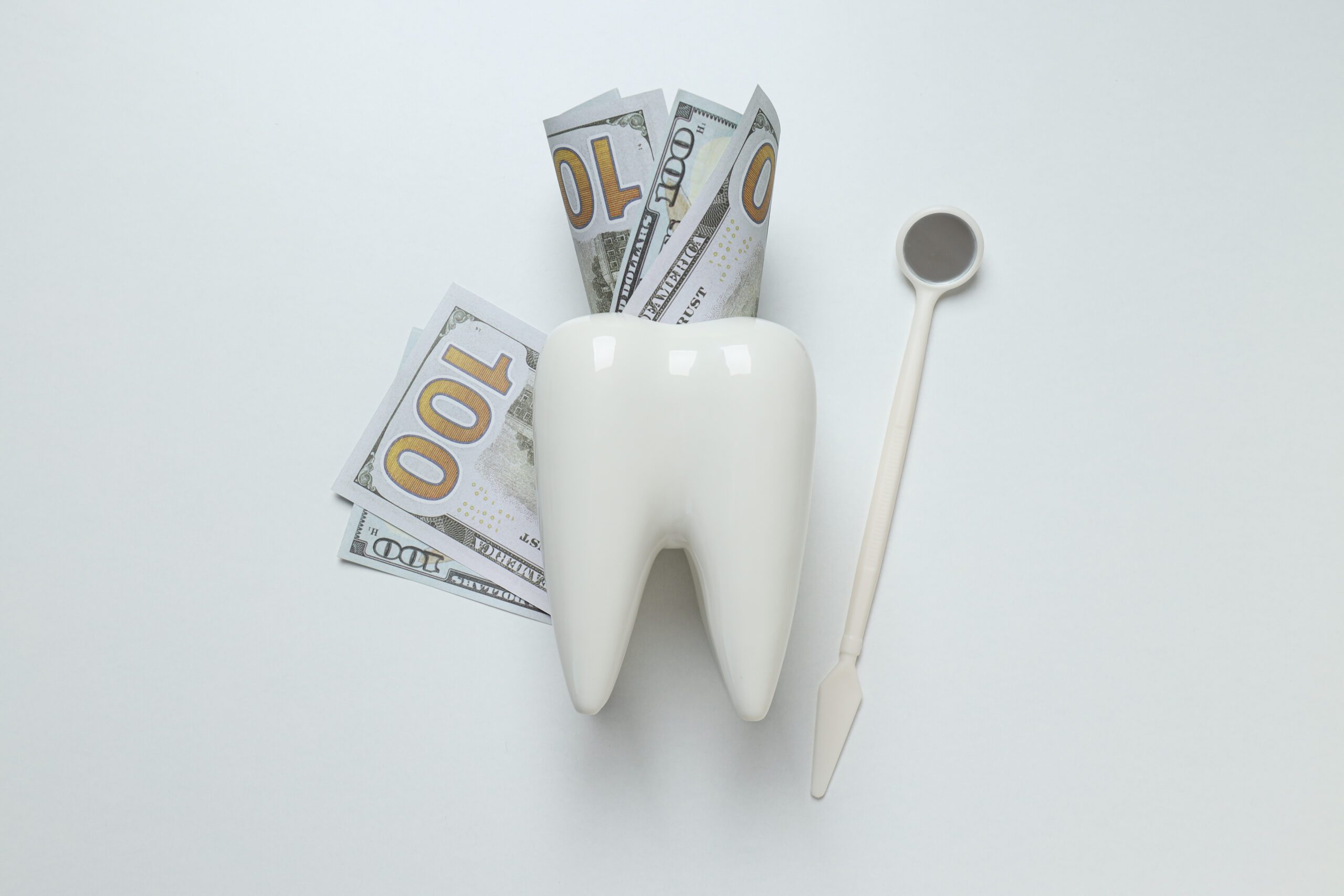Dentist appointments are essential for maintaining good oral health and preventing dental issues. The cost of these dental services can vary depending on the services provided and the patient's location. But how much is a dentist appointment with insurance?
Fortunately, dental insurance can significantly reduce out-of-pocket expenses for dental care, making it more accessible and affordable. Understanding the coverage provided by dental insurance is crucial in estimating the cost of a dentist appointment.
Understanding Dental Insurance
Dental insurance plays a vital role in assisting individuals and families in managing their dental care costs. Most dental insurance plans require a fixed monthly premium, providing coverage for various dental procedures. Understanding the key features of dental insurance helps people in making an informed decision about their dental care.
One of the primary aspects of dental insurance is the coinsurance. Coinsurance is the percentage of the cost that you share with your insurance provider. For instance, if your dental insurance covers 80% of a specific procedure's cost, you will be responsible for the remaining 20%. This cost-sharing mechanism helps to keep the overall premium more affordable.
Another critical factor to consider is the annual maximum. This is the maximum amount your dental insurance plan will cover in a year. Typical annual maximums range from $1,000 to $2,000. Once you reach your annual max, you will be responsible for any additional dental expenses incurred.
Copays and deductibles also play a role in dental insurance policies. A copay is a fixed amount you pay for a dental visit, while the deductible is the amount you must pay before your insurance coverage kicks in. Both of these elements can affect your out-of-pocket costs for dental care.
Individual and family dental insurance plans are available to suit different needs. Family dental insurance plans usually offer coverage for multiple members under a single policy, which can be more cost-effective for households with numerous plan participants.
Network restrictions are another crucial aspect to consider. Some dental insurance plans have specific network restrictions, requiring you to visit dentists within their preferred network for coverage. Going to an out-of-network dentist may result in higher costs or no coverage at all.
A dental savings plan can be an alternative to traditional dental insurance. These plans usually involve a yearly membership fee, which provides you with discounts on dental services from participating dentists. Dental savings plans can offer cost-effective solutions for those without insurance or looking for additional savings on top of their existing dental coverage.
Lastly, the cost of dental insurance may vary depending on factors such as coverage levels, deductibles, annual maximums, and network restrictions. It is essential to compare different individual dental insurance plans to find the one that best suits your budget and dental needs.

Typical Costs for Different Dental Procedures
Dental procedures can vary greatly in terms of cost, depending on factors such as the complexity of the treatment, the materials used, and the specific dental professional performing the procedure. This section will provide a general idea of the costs associated with common dental procedures.
Teeth cleaning and exams are essential preventive services. A standard teeth cleaning can cost between $70 and $200, while dental X-rays can range from $20 to $250 or more. An exam by a dentist typically costs between $50 and $150 or more, depending on factors like location and the dentist's expertise.
When it comes to restorative dental procedures, costs can also vary greatly. For example, filling a cavity can cost from $100 to $600 or more, depending on the extent of the decay and the materials used. More complex restorative procedures, such as root canals, can be more expensive; a root canal on an incisor tooth can cost between $500 and $1,000, while a molar can range from $800 to $1,500.
Dental crowns and bridges are a standard solution to damaged or missing teeth. The cost of a dental crown can depend on factors like the materials used and the labor involved, but the average range is from $500 to $2,500 per tooth. Similarly, dental bridges can cost between $500 and $1,500 per tooth, depending on factors such as the materials used and the complexity of the bridge.
For those in need of tooth replacement, dentures are a common option. The cost of dentures depends on factors like the quality of the materials, the need for extractions, and the cost of follow-up appointments. Low-cost dentures can range from $600 to $1,000 for a full set, while higher-quality options can be significantly more expensive.
Orthodontic treatments, such as braces, can also vary in price depending on factors like the complexity of the case and the duration of treatment. Standard metal braces tend to cost between $3,000 and $7,000, while more discreet options like clear aligners can range from $4,000 to $7,400.
The cost of dental procedures can vary widely based on a host of factors. Speaking with a dental professional is ideal to gain a clear understanding of the costs associated with their specific treatment plan.
Cost Estimation Methods
When it comes to dental appointments, patients need to have a clear understanding of the costs involved, especially when they have insurance coverage. Estimating the cost of dental procedures can be challenging due to various factors such as location, the specific procedure, and individual dental insurance plans. There are several methods available to obtain an accurate cost estimation for a dental appointment.
One popular method for estimating dental costs is using a dental cost estimator. These online tools, like the one offered by Delta Dental, allow patients to input the necessary information and generate a cost estimate for various dental procedures. It is important to remember that these estimators are not a guarantee of the exact fees, but they can provide a useful starting point when planning for dental work within one's budget.
Another approach to obtain cost estimates for dental procedures is consulting directly with the dentist's office. They often have pricing information readily available and can provide a more precise estimate tailored to a patient's specific needs and insurance coverage. In some cases, dental practices may even have their own online cost estimator, which may lead to a more accurate assessment of procedure costs.
For a better understanding of insurance coverage in relation to dental appointments, patients can refer to their insurance provider's website or directly contact customer service. Insurers usually have information on what benefits and procedure costs are covered under their specific plans. It is essential to take the time to review and understand this information, as it can vary greatly between different insurance providers and individual policies.
Coverage and Exclusions
When it comes to dental insurance, it's important to understand the coverage and exclusions associated with your plan. Most dental plans cover a variety of preventive dental care services, such as dental cleanings, exams, and X-rays, which are crucial in maintaining good oral health and preventing dental problems. However, understanding that some services may not be fully covered or might come with additional out-of-pocket costs is essential.
Dental insurance plans often exclude or limit coverage for certain dental procedures, especially when the treatment is considered cosmetic or elective. If you have a more complex dental problem, such as gum disease, you may need to pay a higher percentage of the treatment cost. Sometimes, a dental plan might not cover procedures related to pre-existing dental problems. Additionally, certain plans may have waiting periods for specific treatments, so it's essential to review your policy carefully.
Your out-of-pocket costs can depend on the dental plan you choose and the specific coverage it provides. For example, while most insurance policies cover preventive services at 100%, more extensive treatments like fillings, root canals, or crowns may only be partially covered, with the remaining costs being your responsibility. It's also important to note that some dental plans come with annual maximums, which can limit the amount of coverage you receive per year.

Discounts and Payment Options
When considering the cost of a dentist appointment with insurance, it's vital to explore various discounts and payment options available. Many dental practices offer discounts, special promotions, or free inclusions for patients with dental insurance. These discounts can significantly lower dental costs and help patients maintain their oral health on a budget.
In addition to discounts, those who have dental insurance can benefit from dental discount plans. Dental discount plans are designed to offer patients reduced rates on dental services, such as cleanings, fillings, and more. By enrolling in a dental discount plan, patients can receive lower costs on dental procedures, making dental care more affordable and accessible.
Moreover, payment options play a crucial role in managing dental appointment costs with insurance. Many dental clinics accept a wide range of payment methods, including cash, check, credit cards, and dental insurance. It's essential to discuss payment options with your dentist or dental office staff before your appointment to ensure a seamless process.
A practical approach to budgeting for dental appointments is to explore various dental insurance plans. It's essential to compare the coverage offered by different insurance providers and understand the co-payments, deductibles, and out-of-pocket maximums associated with individual plans. Knowing these details can help patients make informed decisions about their dental insurance, ensuring that their oral health needs are prioritized within their budgetary constraints.
Considering discounts, payment options, and dental discount plans are essential when evaluating the cost of a dentist appointment with insurance. Such factors allow patients to access affordable dental care and maintain their oral health without breaking the bank.
Features of Top Dental Insurance Providers
One of the top dental insurance providers is Humana, known for its versatile plans and comprehensive coverage. They offer a range of tailored policies for individual needs, from basic preventive care to major dental work. Humana Extend 2500 and 5000 plans are particularly well-suited for individuals seeking full coverage for everything from cleanings to implants. Additionally, these plans also include hearing and vision coverage, providing comprehensive health benefits.
Many top dental insurance providers offer a wide array of services to ensure that their customers receive optimal dental care. These services often include coverage for diagnostic and preventive care, such as exams, routine cleanings, and X-rays. Other common services covered by dental insurance plans include basic care like fillings, extractions, and root canals, as well as major dental work like crowns, bridges, and dentures.
It is important to consider the available plan options and whether they allow for out-of-network dentists if you wish to receive care from a specific provider. Some top insurance providers, such as UnitedHealthcare, offer plans with in-network and out-of-network coverage options. In contrast, others may limit the coverage or reimbursement for out-of-network dentists. Before choosing a plan, it is crucial to ensure your preferred dentist is within the insurance provider's network or is covered under the out-of-network benefits.
Dental Care for Children and New Patients
Children and new patients should have access to affordable dental care, as proper oral health is crucial for their overall well-being. Dental insurance plans often cover a significant portion of the associated costs with routine check-ups and treatments, making dental visits more manageable financially.
When searching for a dentist who caters to children and new patients, it's essential to consider the types of insurance plans they accept. Many dental practices welcome a wide variety of insurance providers, including Medicaid and PPO plans, ensuring that high-quality dental care is accessible to all.
Furthermore, it's worth noting that some dental care providers offer free or reduced-cost dental services for children who may not have dental insurance. Such facilities prioritize the long-term oral health of your child and offer programs designed to keep costs low for families in need.
Insurance plans typically cover basic preventative procedures such as cleanings, check-ups, and X-rays. However, coverage for more extensive treatments, such as fillings or orthodontic work, may vary based on the specific terms of the policy. Before scheduling an appointment, you must review your insurance coverage and understand what portion of the costs you'll be responsible for.
Uncommon and Advanced Procedures
When it comes to dental procedures, there are certain uncommon and advanced treatments that patients may require. These procedure costs can vary greatly depending on the specific treatment, complexity, and insurance coverage.
For instance, dental cleaning is a routine procedure that most dental insurance plans cover completely or with a minimal copay. However, specialized deep cleanings or scaling and root planing for patients with gum disease might not be included in the insurance coverage at the same level. As a result, the out-of-pocket cost for these advanced procedures can be higher, ranging between $90-$250 or more, depending on the dentist.
Orthodontics, on the other hand, includes treatments like braces, retainers, and Invisalign. The dental insurance coverage for orthodontic procedures varies significantly based on the insurance provider and plan. Some plans may offer limited coverage, while others can cover a substantial portion of the dental cost. The average cost for braces, for example, ranges from $3,000 to $7,000, whereas Invisalign typically costs between $3,000 and $7,400. The out-of-pocket cost is highly dependent on the insurance coverage and the specific orthodontic treatment required.

Affordable Custom Nightguards
Lastly, IV sedation is an advanced dental procedure often used for complex treatments or for patients with dental anxiety. This type of sedation requires the expertise of a dentist with a specialized license in administering sedatives. The cost of IV sedation can vary widely, often falling in the range of $250 to $900 per hour. Insurance coverage for this procedure depends on the necessity of the treatment, and it may be partially covered if deemed medically necessary.

Affordable Dental Care Options
Many individuals are concerned about the cost of dental care, especially when they don't have insurance. Fortunately, there are several options to access affordable dental care that can keep you smiling without breaking the bank.
One option to consider for low-cost dental care is dental schools. Many dental schools offer services performed by students under the supervision of experienced dentists at discounted rates. These services can include cleanings, fillings, extractions, and more.
Another option for affordable dental care is community health clinics. Many areas have clinics that offer basic dental care on a sliding fee scale, meaning the cost is based on your income. Some clinics even provide free services for eligible patients. It is essential to research local clinics and their services to find the best fit for your dental needs.
Purchasing a dental savings plan is another alternative to consider if dental insurance is unaffordable. These plans offer dental care discounts at participating providers for an annual fee. Compare plans and providers in your area to find the most cost-effective option.
Government programs like Medicaid and the Children's Health Insurance Program (CHIP) also cover dental care for eligible individuals and families. These programs often include cleanings, check-ups, fillings, and other essential dental work. Check your eligibility and local program details to determine if this is a viable option for you.
Lastly, do not hesitate to discuss financial options with your dentist since some may be willing to offer payment plans or adjust the price based on your circumstances. Remember, maintaining your dental health is crucial to your overall well-being, so be proactive and seek the appropriate medical advice to ensure your smile stays healthy and bright.
Frequently Asked Questions
What is the average cost of a dental check-up with insurance?
The cost of a dental check-up with insurance can vary due to factors such as dental insurance plan, the type of check-up, and the dentist's fees. Generally, dental insurance plans cover a significant portion of the cost of routine dental check-ups. For example, individual dental insurance premiums could range from $20 to $50 per month, with family plans from $50 to $150 per month. Co-payments also factor into the cost, with patients typically required to cover a portion of the treatment or service fee.
How do dental insurance plans affect the cost of treatments?
Dental insurance plans typically pay a percentage of the cost for various dental treatments, such as office visits, extractions, fillings, gum disease treatment, and root canals. The percentage paid by the insurance company can range from 60% to 80% of the cost for these services, leaving the patient responsible for the remaining cost. High-dollar co-payments may also apply.
Are there differences in coverage for in-network vs. out-of-network dentists?
Yes, dental insurance plans often have differences in coverage for in-network and out-of-network dentists. In-network dentists have agreements with the insurance company to provide services at discounted rates. Out-of-network dentists may not have such agreements, resulting in possible higher out-of-pocket expenses for the patient or possibly no coverage at all.
What dental care is typically covered by insurance?
Dental insurance plans commonly cover preventive and diagnostic care, such as routine check-ups, cleanings, and X-rays, at 100%. Basic care, including fillings, extractions, and gum disease treatment, may be covered at 60% to 80%. Major procedures like crowns, dentures, and bridges may receive 50% coverage, although the details of each plan differ.
How can I estimate my out-of-pocket expenses for a dental appointment?
To estimate out-of-pocket expenses for a dental appointment, consider the co-payment, coinsurance, and deductible within your dental insurance plan. The co-payment is the set amount you'll pay for a specific dental treatment or service, while coinsurance is the percentage of the treatment cost you'll need to cover. The deductible is the amount you must pay before your insurance begins to cover certain treatments. To get a more accurate estimate, contact your dental insurance provider or the dentist's office to inquire about the costs associated with your specific dental needs.
Do dental insurance plans have annual maximums or waiting periods?
Yes, dental insurance plans often have annual maximums and waiting periods. The annual maximum is the most the plan will pay for included dental services in a benefit year. Annual maximum dollar amounts vary depending on the plan, so it's essential to review your insurance policy. Waiting periods refer to the amount of time a policyholder must wait before being eligible for coverage on specific dental procedures. These waiting periods can range from a few months to over a year, depending on the procedure and the dental plan.




